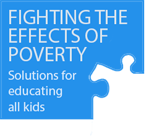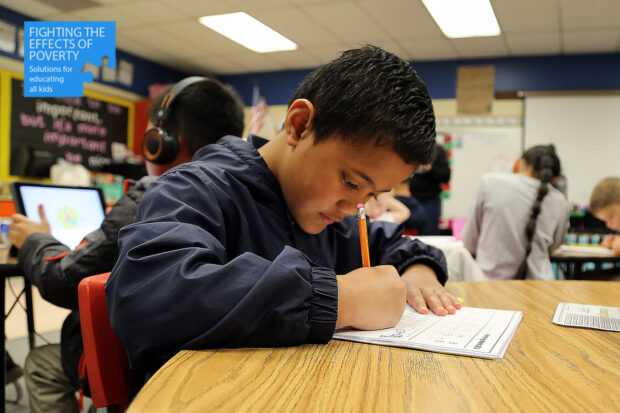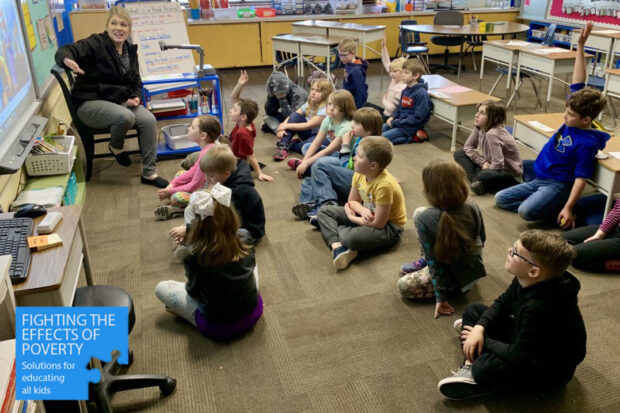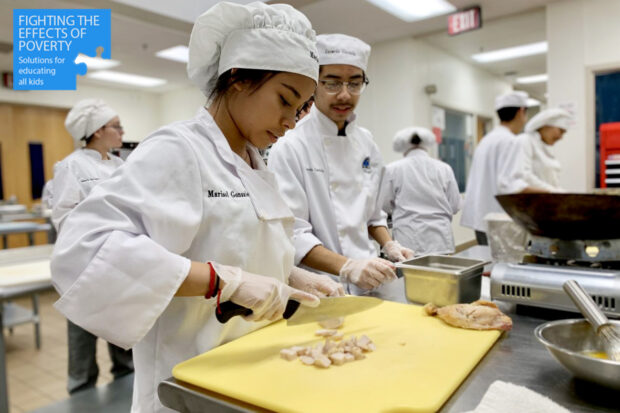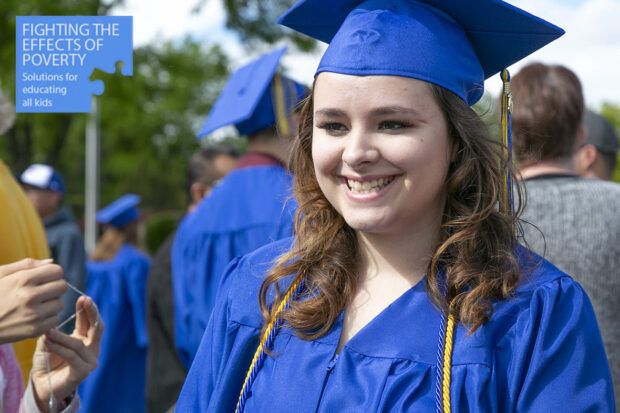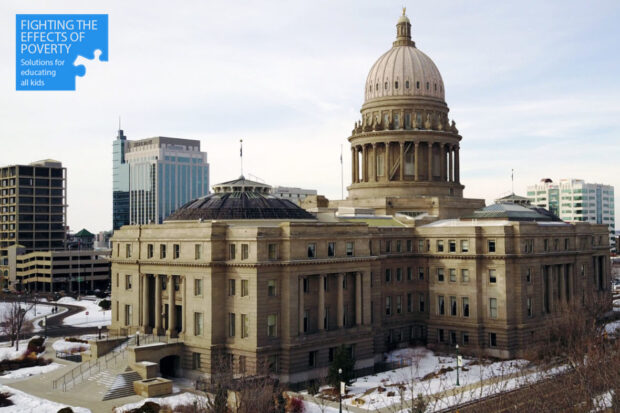Fighting the effects of poverty
Seeking solutions for Idaho education
Journalists search for the truth and expose the problems. In a series we’ll publish next week, we are supporting those investigations with in-depth reports on what’s going right.
‘Poverty is our biggest challenge in education’
Decades of research highlight the long-running correlation between high poverty rates and low student performance — a “crisis” that’s become the “norm” in schools across the nation.
Washington teachers enforce high standards
Evergreen Elementary was considered the “armpit” of the district, teachers say, until they stopped making excuses.
Murtaugh defies the odds with early learning and math improvements
Educators at this rural, high-poverty school attribute gains in student achievement to an increased focus on math instruction and long-running pre-K and all-day kindergarten programs.
Montana elementary teachers team up to battle poverty’s impacts
Peterson Elementary School has boosted achievement among students in poverty through a collaborative model that emphasizes literacy and high expectations.
Las Vegas school connects disadvantaged kids to careers
East Career and Technical Academy is helping students in poverty perform beyond state averages in areas where they typically fall behind. The trick of the trade: An emphasis on career-technical classes.
‘If I didn’t have an education, I didn’t have much’
How one teenager overcame the obstacles of living in poverty.
How will Idaho reduce the achievement gap?
Children who live in poverty perform below their peers academically. Lawmakers and education leaders are considering investments aimed at reversing the trend.

